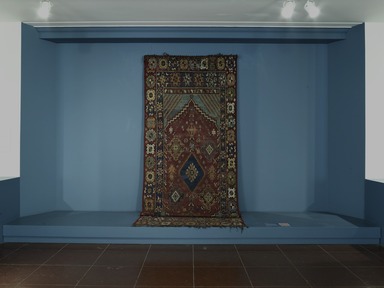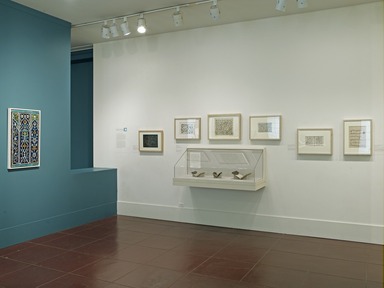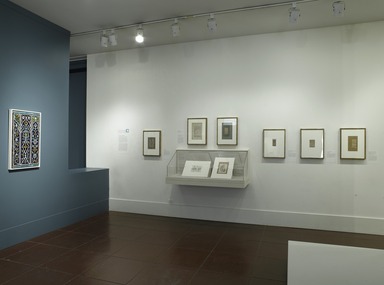

Islamic Gallery (long-term installation 1991), January 01, 1991 through April 22, 2009 (Image: DIG_E2006_Islamic_Gallery_01_Islamic_carpet_PS2.jpg Brooklyn Museum photograph, 2006)

Islamic Gallery (long-term installation 1991), January 01, 1991 through April 22, 2009 (Image: DIG_E2006_Islamic_Gallery_02_Islamic_carpet_PS2.jpg Brooklyn Museum photograph, 2006)
Islamic Gallery (long-term installation 1991)
DATES January 01, 1991 through April 22, 2009
ORGANIZING DEPARTMENT
Arts of the Islamic World
COLLECTIONS
Arts of the Islamic World
-
Captured Reflections: The Photographic Portrait in Iran
This temporary installation of works on paper is the second in a series on portraiture in Asia and the Islamic world. Under the Qajar dynasty (1785–1925), the art of portraiture was reflected on a monumental scale in life-size oil paintings inspired by European artistic traditions, such as the portrait of Prince Yahya in this gallery. It could also be seen in large-scale wall paintings in palace buildings. The images displayed in this installation, however, represent examples of another medium used for portraiture under the Qajars: photography. Eventually, photography would replace painting as the preferred medium for imperial and other portraits. These photographic portraits combine some of the aesthetic qualities of the painted portrait with the modern technological advances introduced by the camera in mid-nineteenth-century Iran.
The Persian word for photography, ‘aks, stems from an Arabic root denoting reflection, in the sense of an image being reflected in water or a mirror. Historically, the word was also used as a technical term to describe stencils used for creating designs. In fact, early photography in Iran was understood as an art form rather than as a common profession. Many of the portraits shown here have been attributed to Antoin Sevruguin (d. 1933), an Armenian artist who became one of the most celebrated photographers of Qajar Iran. All the “captured reflections” seen here testify not only to the documentary value of the finished photographic portrait but also to the artistic talent behind the composition.

